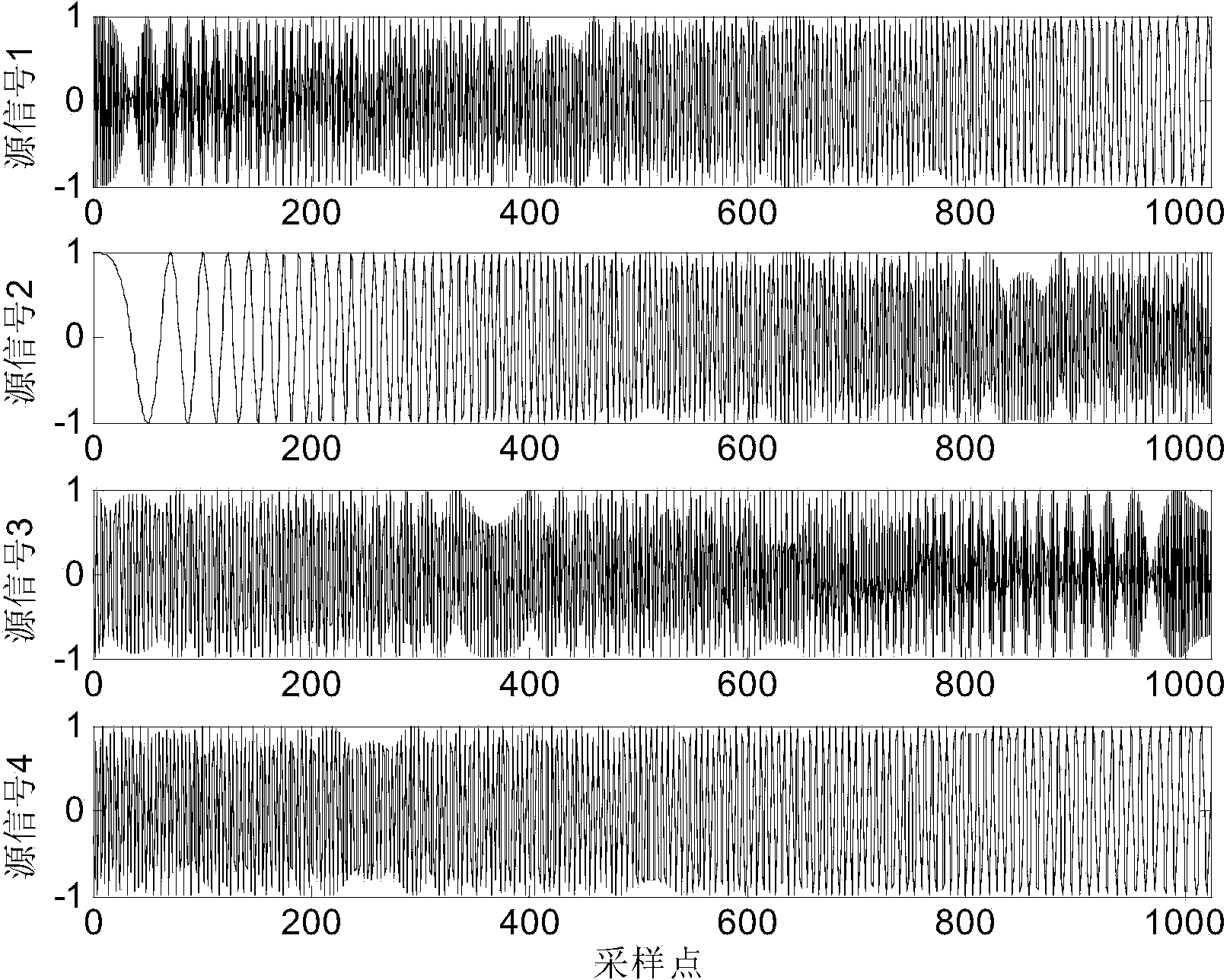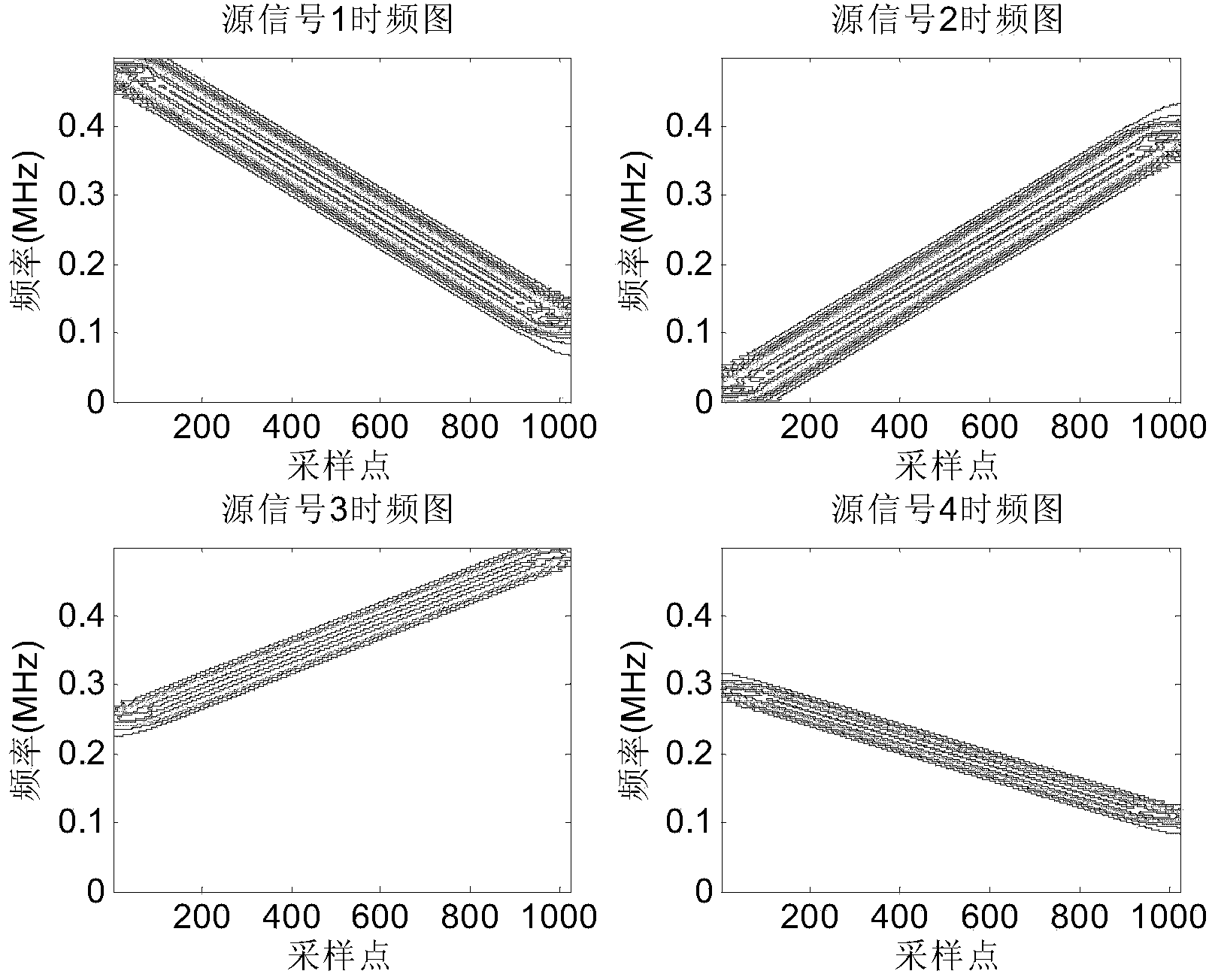Hybrid matrix recognition method in underdetermined blind source separation based on tensor regular decomposition
An underdetermined blind source separation and mixing matrix technology, applied in the field of communication, can solve problems such as difficult to meet, unsatisfactory performance, and affecting the recognition accuracy of the mixing matrix, so as to overcome the difficulty of extraction, solve the identification of the mixing matrix, and improve the recognition accuracy Effect
- Summary
- Abstract
- Description
- Claims
- Application Information
AI Technical Summary
Problems solved by technology
Method used
Image
Examples
Embodiment Construction
[0020] The present invention will be described in further detail below with reference to the accompanying drawings.
[0021] Refer to figure 1 , The implementation steps of the present invention are as follows:
[0022] Step 1: Sample the source signal at the receiving end to obtain the observation signal.
[0023] M sensors sample the source signal at equal intervals at time t to obtain the observation signal x i (t), where 1≤i≤M, t∈[1,2,...,N], N is the length of the sampled data.
[0024] Step 2: Calculate the fourth-order covariance matrix of the observed signal.
[0025] (2.1) Calculate the fourth moment of the observation signal:
[0026] m ^ i , j , k , l ( τ 1 , τ 2 , τ 3 ) = 1 T X t = 1 N x i ( t ) x j * ( t + τ 1 ) x k * ( t + τ 2 ) x l ( t + τ 3 ) ,
[0027] Among them, 1≤i,j,k,l≤M,τ 1 ,τ 2 ,τ 3 They are the delays ...
PUM
 Login to View More
Login to View More Abstract
Description
Claims
Application Information
 Login to View More
Login to View More - R&D
- Intellectual Property
- Life Sciences
- Materials
- Tech Scout
- Unparalleled Data Quality
- Higher Quality Content
- 60% Fewer Hallucinations
Browse by: Latest US Patents, China's latest patents, Technical Efficacy Thesaurus, Application Domain, Technology Topic, Popular Technical Reports.
© 2025 PatSnap. All rights reserved.Legal|Privacy policy|Modern Slavery Act Transparency Statement|Sitemap|About US| Contact US: help@patsnap.com



